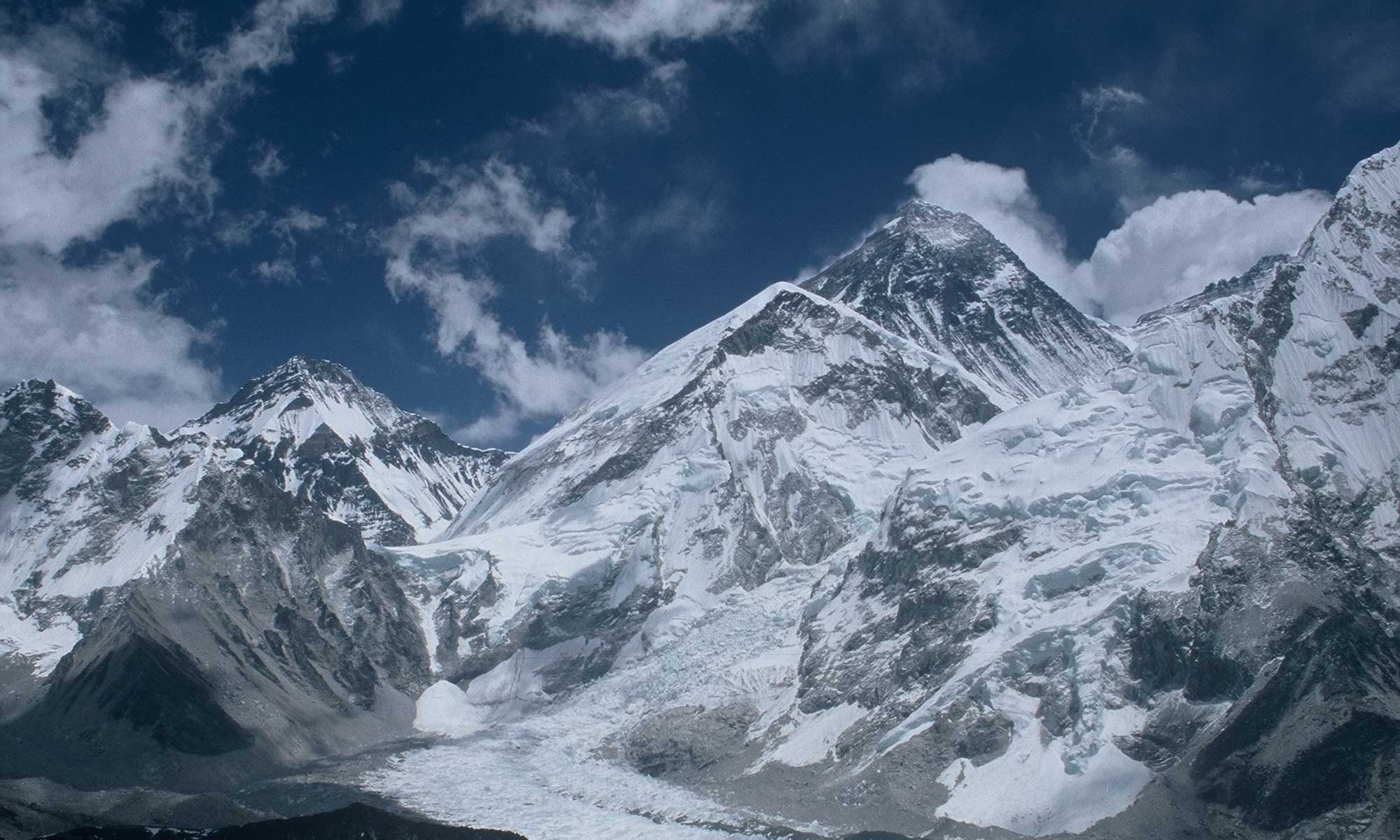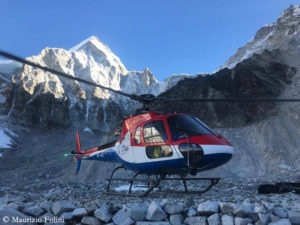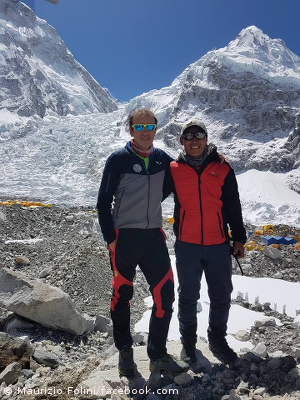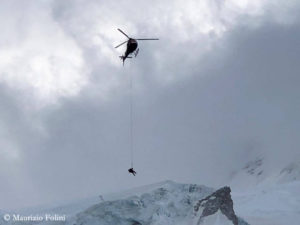Secret heroes. There are players on Mount Everest that everyone knows and appreciates, but hardly anyone talks about. Like the “Icefall Doctors”, those highly specialized Sherpas who year after year set up the route through the dangerous Khumbu Icefall and maintain it throughout the season. Or Maurizio Folini and Lakpa Norbu Sherpa, who fly up the Everest slopes with their red-white-blue painted “Kailash” helicopter whenever it is necessary to bring down climbers who have got into trouble or died. The 53-year-old Italian and the 38-year-old Nepalese have long been a well-rehearsed team. Also in the past season they did most rescue flights together.
Maurizio has been flying regularly in the Himalayas since 2011. Lakpa Norbu was trained as a helicopter rescuer in Switzerland. He is a true specialist when it comes to transporting injured, sick or even dead people on the long line. Maurizio Folini took the time to answer my questions after his return from the Himalayas. I appreciate that, because Maurizio rarely has time. Meanwhile he is flying in Switzerland again.
Maurizio, the Everest season is behind you. How many flying hours and how many rescue missions did you have?
It was about 150 flying hours in six weeks, however including also many training flights with outboard cargo with Dilip, a young Nepalese pilot who works for “Kailash”. I myself have flown 47 rescue missions above 6,400 meters, some were also rescue operations on the long line from an altitude of about 7,000 meters.
Eleven people died on Everest this spring – without a natural disaster. How do you see this balance as a rescuer?
In this season it was windier, accordingly the temperatures were lower, it was colder than in other years. In addition, the “Everest guests” are not always equally well prepared for such a mountain. For certain expedition operators, the bottle oxygen logistics are also not always optimal. These and other factors have led to the relatively high number of victims. The Sherpas brought the bodies down to Camp 2 (at 6,550 meters), from there we flew them by helicopter to Everest Base Camp and then on to Lukla.
On Makalu, a Sherpa died during the rescue of a dead mountaineer. How much risk do you have to take?
The Sherpa on Makalu died near Camp 2 (at 6,600 meters). I think it was a health problem. This has nothing to do with the risk that we as rescuers have to take.
Do you feel there is sufficient appreciation for your risky job?
We are all professionals – the pilots, the rescue sherpas and all other people involved. It is our job that we have chosen voluntarily. And we always try to do our best. The best appreciation is when a rescued person shakes hands with you and says thank you.
In 2018, massive insurance fraud by cheat rescue flights was reported. Has the situation improved from your point of view?
It’s gotten much, much better. All my patients were examined either in the medical tent of the HRA (Himalayan Rescue Association) at Everest base camp or in the hospital in Lukla. Only then it was decided, together with those responsible at the insurance companies, how to proceed. In each individual case, we must present a permit from the Lukla Airport Authority before the flight and also provide a photo of the patient. It is now going exactly as I have always wished. However, it would be good if the whole bureaucratic apparatus were to work a little faster so that we do not lose a very decisive day, as in the case of the Annapurna rescue.





